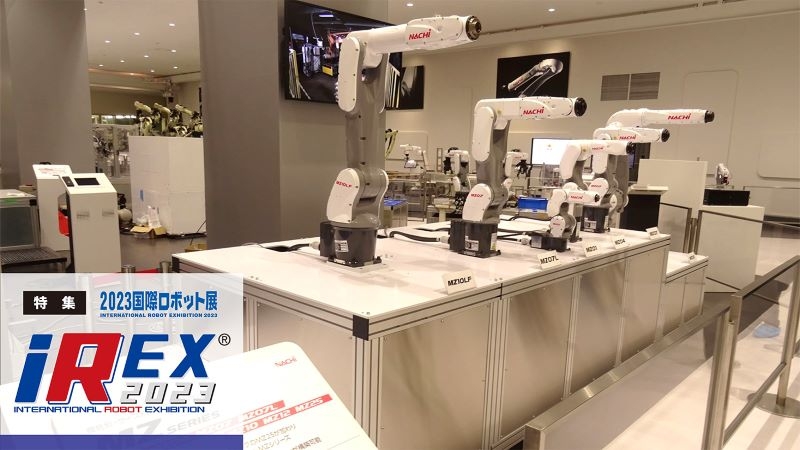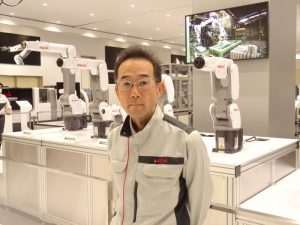
- News
- Basics
- Products
- JP Job shop
- Exhibition
- Interview
- Statistic
- PR
- Download
- Special contents
Interview
December 11, 2023

NACHI-FUJIKOSHI offers a variety of automation solutions using its high-speed, high-precision robots. Based on the “MZF Series”, which is an upgraded version of the “MZ Series” industrial robot with higher performance, the company is expanding its product lineup to meet users’ needs. At the 2023 International Robot Exhibition (iREX2023), the company presented a highly productive automation demonstration focusing on collaborative robots, for which demand is expected to grow in the future. Through space-saving automation of complex tasks, the company aims to further promote robot use in production sites.
 NACHI-FUJIKOSHI
NACHI-FUJIKOSHI
Robot Development Dept. Robot Division
Atsushi Koshino, General Manager
We see the introduction of collaborative robots becoming more widespread in the future. While industrial robots and automated equipment are being used to automate production lines, there are still some manual processes. This is because many of these processes, such as assembly and inspection, are complex and difficult to automate. In order to automate such processes that have not been fully automated without changing the layout of the equipment as much as possible, collaborative robots are suitable because they do not require safety fences.
To meet the need for easy automation of difficult tasks, the use of cameras and AI is essential. Our company excels in technology that precisely controls robot movements based on images captured by cameras, and we intend to combine this with AI in the future.
In addition, to lower the barriers to automation, we have made it possible to operate the teaching pendant as if it were a smartphone. This allows users to set the robot’s movements without any programming knowledge, making it easy to use even for first-time robot users.
In terms of market conditions, investment in electric vehicles is very active, and orders for large robots are increasing. In particular, FSW (friction stir welding) automation is attracting a lot of attention and we are receiving many inquiries. In addition, the current economic stagnation in China has caused the electrical and electronic fields to lose some momentum, but there is no doubt that these fields will become more important in the long term.
We are expanding our robot lineup to address a variety of application scenarios in these growing industries. We have developed models that not only have a wide range of payloads and arm reaches, but also have special structures. By recognizing the commonality of parts in this process, we can reduce production costs. Since there is a common design concept, the usability of the product does not change significantly. As the labor shortage becomes more severe, we will continue to develop our products with a focus on ease of use, so that robots will become more widely used.
August 22, 2025